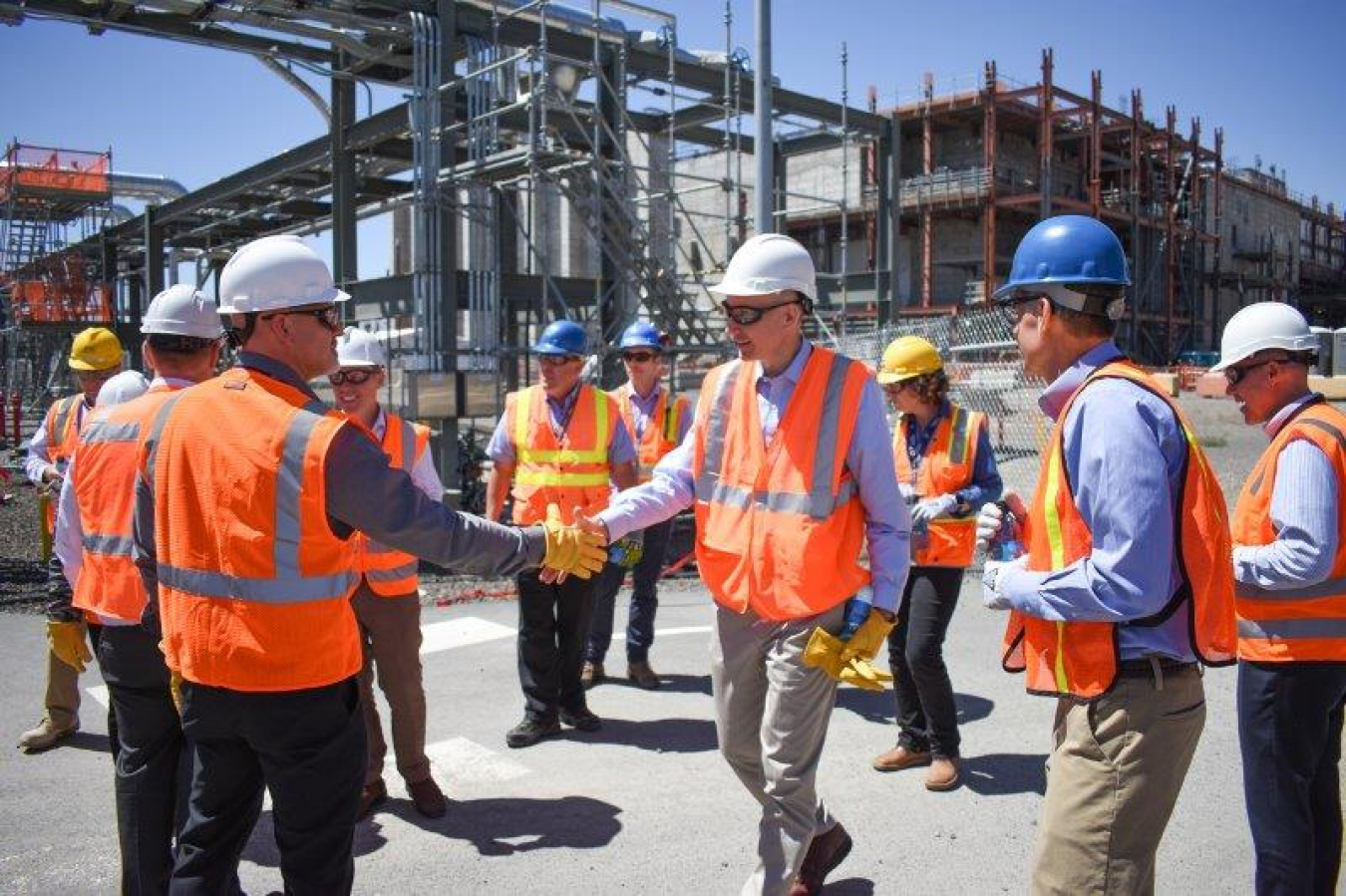Deputy Energy Secretary David Turk made his first trip to the Hanford Site on June 28, visiting a number of cleanup projects with EM Senior Advisor William “Ike” White.
Office of Environmental Management
July 5, 2022
RICHLAND, Wash. – Deputy Energy Secretary David Turk made his first trip to the Hanford Site on June 28, visiting a number of cleanup projects with EM Senior Advisor William “Ike” White. While in the Tri-Cities, Turk and White participated in events with area tribal leaders and the local community and toured the Pacific Northwest National Laboratory (PNNL).
“With large-scale tank waste treatment underway for the first time ever, this was an opportune time to visit Hanford,” said Turk. “The transformational progress being achieved by the Hanford team is a testament to DOE’s commitment to protect people, the environment and the Columbia River. While significant challenges remain, I left Hanford encouraged by the work on the ground and excited about the future of the Tri-Cities.”
During his tour, Turk got an up-close look at Hanford’s Tank Side Cesium Removal System. A 2022 EM priority, the system became operational this year and has already treated more than 260,000 gallons of tank waste. He then moved on to the Waste Treatment and Immobilization Plant (WTP) facilities being commissioned to immobilize the treated tank waste in glass via the Direct-Feed Low-Activity Waste program.
After stopping to see the Integrated Disposal Facility, where canisters of immobilized waste from WTP will be disposed, Turk visited the Waste Encapsulation Storage Facility, where work is underway to transfer nearly 2,000 highly radioactive capsules from a water-filled basin to safer dry storage. Before ending the tour, Turk was briefed on risk reduction work at the 324 Building and got to see part of a system that treats over 2 billion gallons of contaminated groundwater each year.
After his tour of the site, Turk hosted a meeting with leaders representing the Confederated Tribes of the Umatilla Indian Reservation, the Yakama Nation, the Nez Perce Tribe and the Wanapum Band of Indians. During the discussion, Turk emphasized that DOE remains committed to cleanup at Hanford, and announced a science, technology, engineering and math (STEM) grant up to $5 million to the Northwest Indian College from EM’s Minority Serving Institutions Partnership Program.
Turk also met with the board of directors of Hanford Communities and was the guest of honor at a community reception at the Tri-City Development Council offices. Turk discussed cleanup progress at Hanford, the future of the site and potential clean energy opportunities.
“Having the opportunity to hear directly from tribal members and community leaders most directly impacted by the legacy of past operations at Hanford was a top priority for this trip,” said Turk. “As we advance environmental and affordable clean energy missions, DOE is fortunate to be able to draw on a skilled Hanford workforce and talented scientists at PNNL, as well as surrounding tribes and communities that are knowledgeable about the history, the cleanup mission and the local ecology of this area.”
To receive the latest news and updates about the Office of Environmental Management, submit your e-mail address.

